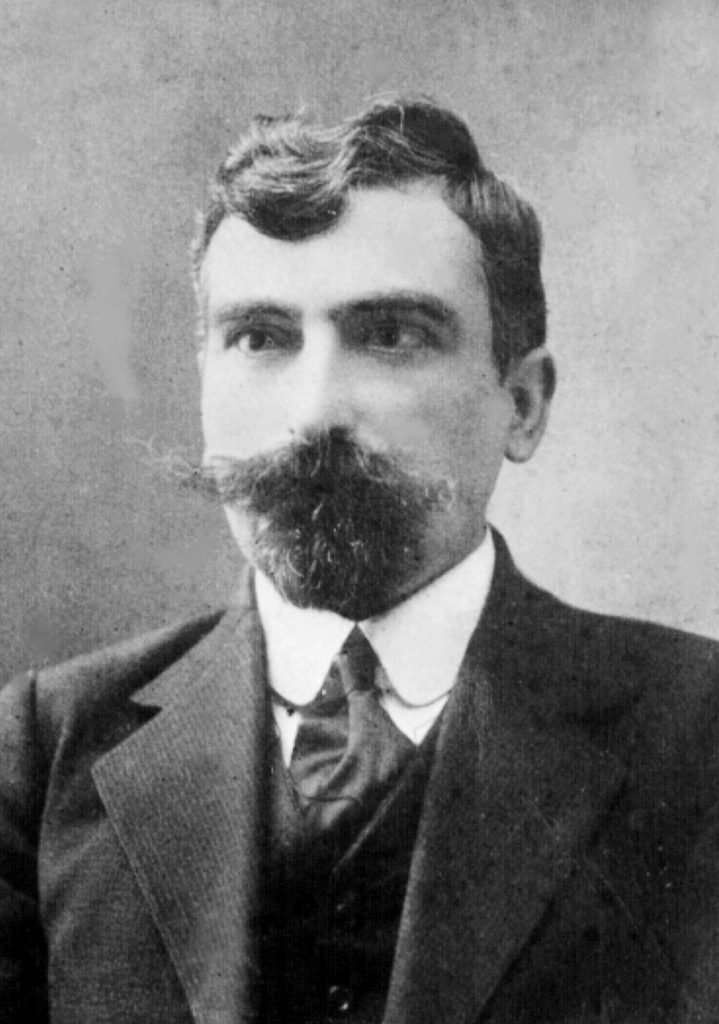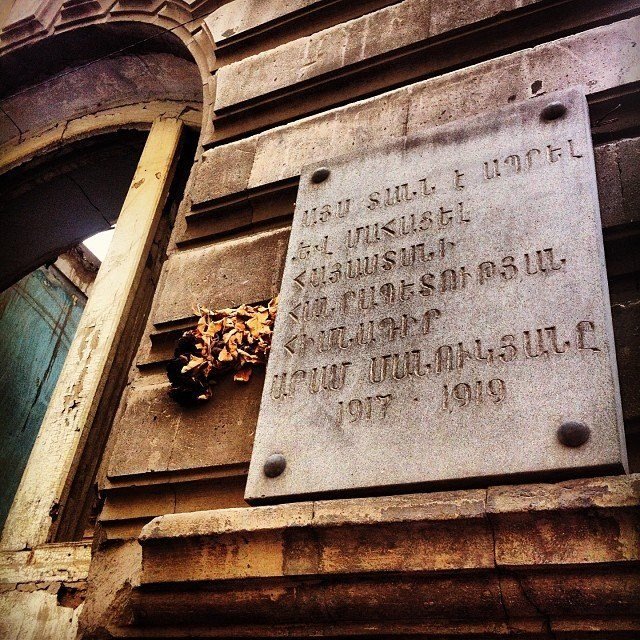YEREVAN—Yerevan City Council recently announced a competition for the creation of a public monument dedicated to the Founding Father of Armenia’s Independence, Aram Manoukian.

The monument will be erected in a space adjacent to the intersection of Aram Street and Nalbandian Street in downtown Yerevan. Details about the specifications of the monument can be read in Armenian here.
Manoukian’s bust currently stands at the Armenian Police headquarters in Yerevan.
Manoukian’s home is currently located at 9 Aram Street—a street that was renamed in Manoukian’s honor after Armenia’s second independence. Manoukian lived in the house—which is currently on the list of protected monuments of Armenia—from 1917 to 1919.
Since Armenia’s re-independence in 1991, several people in Armenia and the Diaspora have criticized the state of the building, which has drastically declined over the years, as a result of neglect and indifference.
In a March 2016 op-ed, longtime Armenian activist and former ANCA Chairman Garo Armenian called for an immediate restoration of the building, to ensure that it is ready to open its doors to the public in time for the Centennial of the First Republic in 2018.

“Many years ago, this national shrine, along with the adjacent city block, was hastily privatized by the then-government of Armenia and was allowed to sit there in total oblivion waiting for the ‘Hin Yerevan’ city mall to be conceptualized and take shape. While the original intent seemed to be to restore the building and to turn it into a museum as part of the architectural concept of the future ‘Hin Yerevan’ shopping center, with its occupants gone, the building incurred substantial decay over the years—to the point that it now exists only in the form of a skeleton at No. 9 Aram Street, recognizable only by the barely legible commemorative plaque on its outside wall, placed there decades ago not by the present but the pre-independence authorities of the country,” Armenian wrote in his piece entitled “This House Is the People’s House.”

A public event was organized on Jan. 29 in front of what is left Manoukian’s home. The event was organized by a group of Armenian youth who sang, danced, and presented the works and activities of Manoukian to the public, in honor of the 98th anniversary of his passing and to bring awareness to the current state of the building and to issues pertaining to the preservation of cultural and historic monuments in Yerevan.
Armenia’s Minister of Culture Armen Amiryan was present at the event. While speaking to reporters, Amiryan expressed hope that these sorts of events will bear fruit and achieve their intended goals. “This building remains part of the ‘Old Yerevan’ Project, which, when implemented, can once again make the building what it once was,” said Amiryan.
“Some believe that certain rooms could be turned into a museum, but I think a functioning, living building will make for a better museum rather than a [traditional] museum building,” added Amiryan. “The important thing is to reconstruct the building to create an atmosphere similar to the years of the First Republic.” He assured that the building cannot be destroyed because it is protected by law.
Armenian Revolutionary Federation (ARF) Parliamentary Faction secretary and ARF Supreme Body of Armenia member Aghvan Vardanyan, who was also present at the event, stressed that the government needs to find a solution to this issue, especially when they have agreed to reconstruct it.
“Aram Manoukian is a symbol of the First Republic of Armenia yet there is no statue or monument dedicated to him or his work,” said Vardanyan. “The reconstruction and work for this building has not progressed and the result is the current status of the building.”
The building currently has a commemorative plaque on its outside wall that states that Manoukian once lived there.
Born in the village of Zeyva, in Kapan, Zangezour, Aram Manoukian attended parochial schools in Shushi and Yerevan. He joined the ARF at a young age and became an organizer among laborers in Batumi, in 1901, and then in Gandzak and Kars, where by 1903–04 he had already become a highly valued leader.
In 1904, he crossed into Iran, then to Van, where for four years he was the central figure. After the traitor Davo informed Turkish authorities about the location of ARF arms caches, Manoukian was arrested and tortured. He was eventually released during the Ottoman Constitutional Regime.
He attended the Fourth World Congress in 1907. He was a teacher for a time in Ordu. He then went to Geneva for a year to visit Rouben Ter Minasian, then returned to Van.
In 1915, after Vana lshkhan and Arshak Vramian were assassinated, Manoukian was left alone to face a catastrophic situation. He led and became the symbol of the heroic Battle of Van in April 1915, and was appointed governor of free Vaspourakan.
He accompanied the people of Van in their exodus toward the Caucasus. In 1916–17, in Tiflis, Manoukian was active in the affairs of the ARF Bureau, the Armenian National Council, and Western Armenian refugees.
As the National Council’s special envoy and plenipotentiary representative in Yerevan, Manoukian was proclaimed “dictator” of the Ararat region in May 1918 and led the resistance against the invading Turks. He was the symbol of the victory in the Ararat plain and was considered by the population as the founder of the Armenian Republic.
In the Republic’s first government (under Hovhannes Kachaznouni as Prime Minister), Manoukian was Minister of the Interior and Minister of Supplies. He contracted typhus, which was wreaking havoc at that time, and died at age 40, on Jan. 29, 1919.


A more appropriate place for our National Hero would be in the centre of the REPUBLIC SQUARE (A vast ugly looking emptiness) on a huge pedestal holding the the tricolor as the founder of the ARMENIAN REPUBLIC. Still renovate the residence in 9 Aram street and make it a History Museum of the First Republic.